Polonaise - Polish dance that conquered the royal courts of Europe
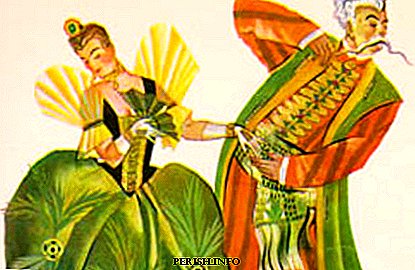
Polonaise is called the "king of the marches" for its grace, solemnity and greatness. This dance was an obligatory part of court balls. Important ceremonies for royal and royal persons could not have done without it. He seemed to have been created to demonstrate their own brilliance and glory, and this deserved the special love of kings. Where he originated and how he won the title of the opening court dance, we will tell on this page.
What is polonaise. Dance features
This is a dance-procession, unhurried and discreet. To understand its features, we offer to connect the imagination. Imagine a large ornate room, on the sides of which there are all those present. The middle of the room is empty, but not for long. Solemn music sounds and the procession begins. Men and women in couples go into the hall, slowly moving along it, all the time focusing on the first couple. It is she who sets the character of the dance.
But here the procession, full of grace and dignity, ends. The dancing moves to the performance of the following figures. Partners circle around their partners, then they diverge for a while and change in pairs. After that, all couples line up and raise their linked hands up. A kind of tunnel is formed, through which the first pair first passes, then the second, and so on.
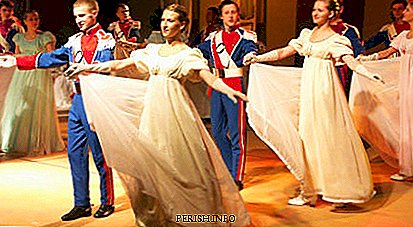
So what makes the polonaise so special:
solemnity and degree in every movement;
it is an improvisational dance where the first couple plays the leading role;
commitment to rituals and rules. So, the polonaise begins with a riturneli or musical introduction. Only after that the first gentleman invites everyone to dance;
simple choreography. Although simple, it seems only at first glance. Not everyone is able to maintain posture for a long time and fill each with grace and grace.
Polonaise history: Polish culture
For a long time there was no single point of view on the question of the origin of polonaise. Some experts believed that the dance has French roots, others that Spanish-Arabic traditions are felt in it. The third party proved to be correct in its reasoning, according to which Poland can be considered the "culprit" of the birth of Polonaise.
For the first time about the Polish dances started talking in the middle of the XVI century. The term "Polish dance" was used exclusively by foreigners. The Poles themselves called their Hungarian dances, most likely in honor of Stephen Batory, who was Hungarian.
Everyone danced in Poland: from ordinary people to monarchs. Among all the styles, the “Great Dance” was particularly distinguished, which is considered the progenitor of Polonaise. Its distinguishing feature was solemnity. Just imagine a column of warriors performing original steps with a sense of dignity and pride. It is warriors. It is believed that the original dance was exclusively male and was intended to demonstrate self-confidence, as well as to admire the beautiful ladies. As far as this is true, experts find it difficult to say. But in one they converge: the polonaise was always full of solemnity and inner dignity.
The Polish aristocracy had a special relationship with polonaise. The nobility, as the privileged class of the Kingdom of Poland was called, considered this dance to be almost the only one worthy of the monarchs. It does not matter that the basis of the movements was "peeped" in popular culture. Who will speak about this when the influence of court dances is felt in every pa of dancing couples, and mainly - the chimes and minuets of French origin.
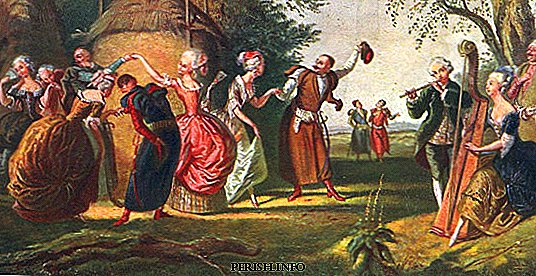
Ceremonial march through Europe
We owe the appearance of polonaise in other European countries to Stanislav Leschinsky, whom the Poles called the benefactor king. While in Stockholm, he demonstrated his ability to dance in an original style, which caused universal admiration. It happened in 1711 - the polonaise begins to spread throughout the royal courts of France, Germany, Sweden and other countries, including the Russian kingdom.
But simply dancing the polonaise for the European aristocracy was boring. At least, the court dance masters thought so. They changed the choreography, added new elements, giving the dance a unique national charm.
Polonaise very firmly established in the court culture of royal families. No wedding, ball or official event could do without it. He danced several times in the evening, solemnly parading in pairs in a circle.
At the end of the 18th century, the polonaise returned to Poland and became its symbol. He was little reminiscent of the original version of the dance, which once went on a journey through the European courts. The rhythm has changed, musical accompaniment instead of vocal has appeared, dance outfit has appeared in a new guise: the European dress has come into fashion.
At the same time, composers began to show particular interest in dance. They composed melodies to accompany the Polonaise, which later became more used at concerts, and not at dance receptions.
Polonaise sunset
XIX century replaces XVIII. The tastes of the aristocracy change, the culture and the idea of the beautiful change. But the polonaise continues to live. True, more melancholic tones appear in the music, and its solemnity attracts an exceptionally old generation that lives the traditions of the past years.
Though the polonaise took the place of the first dance, its popularity began to fade. Now you can see a couple performing traditional Polish dance at proms and costume shows dedicated to the reconstruction of past eras.
History of Polonaise in Russia
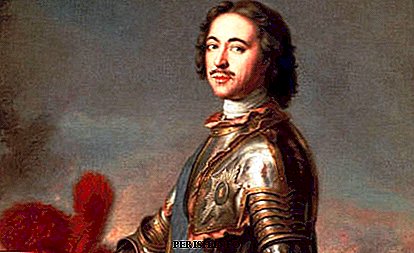
Polish dance, in particular, the so-called polonaise in Russia, was most welcome to the imperial court. Representatives of the upper class began to perform it under Peter I, who was very fond of this dance. For what? For the opportunity to demonstrate the wealth of the imperial halls. Contemporaries of that time even described in their memoirs how guests walked around the halls, all the rooms and stairs. This feature of the dance was further used to show all the luxury of the ball host's home.
Under Peter, polonaise was rarely an opening dance. Usually it was preceded by a dance bow. This tradition was continued by Catherine the Great. She also took the second role to the polonaise, preferring the minuet. Polish dance was opening at the balls under Pavel Petrovich. In this case, the first pairs during the execution were necessarily the representatives of the knightly order.
It is noteworthy that in Russia, polonaise existed in two variations: ordinary and ceremonial. Ceremonial was part of the wedding celebration, and the usual - of any ball.
The love of polonaise among Russian nobility can be traced to the flesh until the beginning of the XX century. Under the influence of court etiquette, the dance changed, but its solemnity and degree did not disappear anywhere. These features of the style strengthened the position of the emperor in society and emphasized his becoming and greatness.
Interesting Facts
The name "Polonaise" was coined only in the XVIII century outside of Poland. The Poles themselves called their age old. A little later the term "Taniec polski" or "Dance Polish" came into use. Under this name, he was best known in his homeland.
No music, only the singing of the dancers themselves accompanied the polonaise at the dawn of its birth until the end of the XVIII century. Only then came instrumental music, without which it was difficult to imagine the performance of the dance at the royal celebrations.
The ball, dedicated to the celebration of the 300th anniversary of the House of Romanov in 1913, opened with a polonaise. The music was performed by Glinka. The dance lasted almost 20 minutes. During this time, dancing couples made 3 tours of the hall.
And yet: the nobles borrowed from the common people of the movement for polonaise or vice versa? This question remains open among specialists. There is an opinion that simple Poles very favorably met a new dance and created on its basis a simple version of the performance called "chodzony".
In Russia, Russian officers especially liked polonaise.
The ball, dedicated to the wedding day of Peter III and Catherine the Great, lasted only 1 hour. All this time the guests were dancing only polonaises.
Both men's and women's costumes, in which the polonaise was performed, were distinguished by wealth and luxury. For their manufacture used expensive fabrics - gilded brocade, velvet and satin. The shoes were red or gold hues.
Famous Polonaises
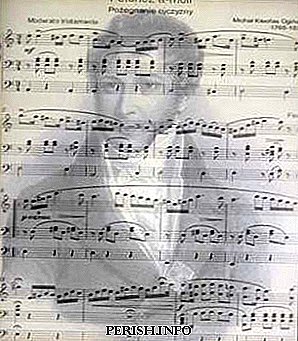
"Farewell to the Motherland" Michael Oginsky, a Polish composer. Another name for this song is "Polonaise Oginsky". This rather famous melody was written in 1794. Under what circumstances it is not exactly known. But there is a version that Oginsky wrote it, leaving the Polish-Lithuanian Commonwealth. Interestingly, in Belarus, “Farewell to the Motherland” was wanted to be made a national anthem, but for the commission the melody seemed too complicated.
"Farewell to the Motherland" by Mikhail Oginsky (listen)
Polonaise from the opera "Life for the Tsar" Mikhail Ivanovich Glinka. For the first time this work was presented to the public in 1836. The representatives of the highest circle liked the music so much that they began to use it at almost every ball when they were to perform polonaise.
Polonaise from the opera "Life for the Tsar" (listen)
Polonaise in A Flat Major Frederic Chopin. In total, 16 polonaises were written by this composer, but it is this composition that is notable for its grandeur and greatness.
Polonaise in A Flat Major by Frédéric Chopin (listen)
Polonaise from the opera "Eugene Onegin" by Pyotr Ilyich Tchaikovsky is impressive in pomp, solemnity and brilliance. Listening to him, you begin to understand why representatives of the Russian imperial court loved the Polish dance so much.
Polonaise from the opera "Eugene Onegin" (listen)
Such is the story of the Polonaise, which became the main dance at European balls. It contains the history of many countries, including Russia. After all, dance traditions are primarily a reflection of the mores and customs characteristic of the bygone eras. If you want to know what the society of high society in the XVII - XIX centuries was, just look at the performance of the Polonaise. This dance will tell a lot.

Leave Your Comment